What is the buyer pyramid & how to use it to your advantage?
The buyer’s pyramid with an eye towards your field can help you find new customers, which is imperative regardless of your business’s size.

Finding new customers is imperative regardless of your business’s size. Analyzing the buyer’s pyramid with an eye towards your field can help you tap into markets other sellers miss simply because they may require more work. In fact, most SMB owners only target 3% of their potential market. You want to expand, after all.
What is the Buyer’s Pyramid?
The buyer’s pyramid is a tool for visualizing the available market for a given product or service. The overall layout describes various states a customer can be in and serves as a reminder of all the possibilities for finding customers.
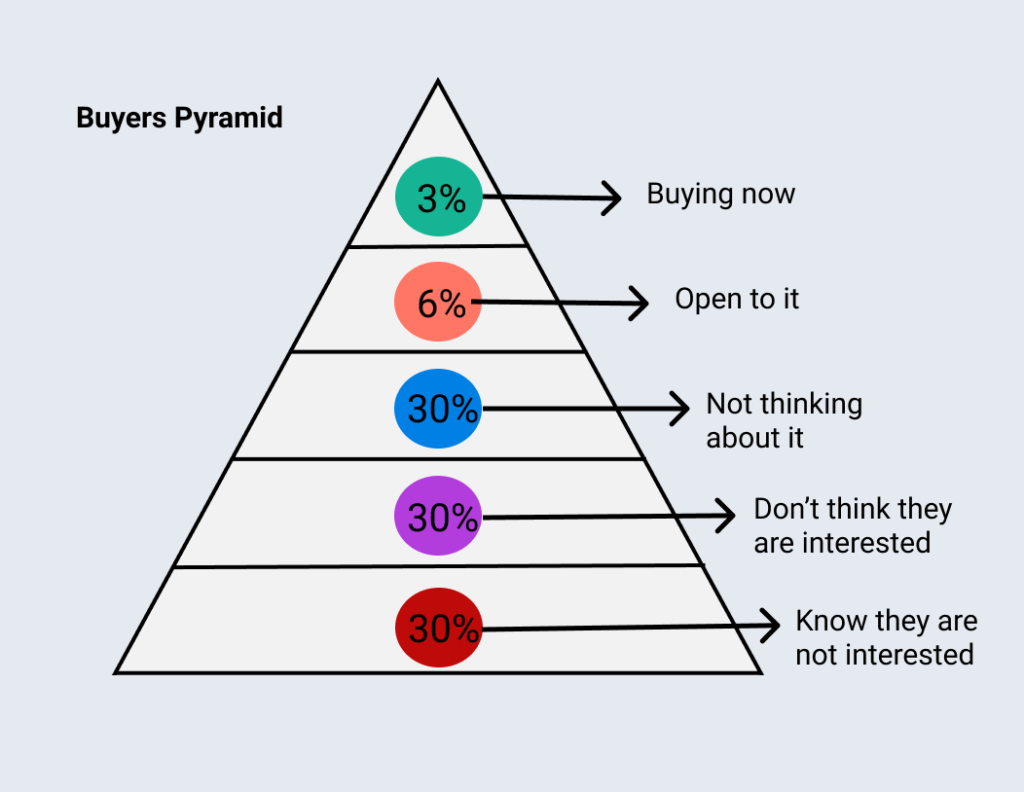
1) Ready to Purchase (3%)
The top of the buyer’s pyramid is where most SMB owners focus their entire marketing effort. Since it is only 3% of the potential customers, that may sound ludicrous. However, you will find these potential customers ready to buy what you’re selling.
The top 3% of the buyer’s pyramid is the most prepared new clients. Each has researched and pondered their decision to buy from a provider like your company. Often, they need to see that your company has what they need before they order. This deliberation also often makes them the easiest clients to work with.
For example, a shop owner wants to add a blog to his website but does not have the time. He has been looking at copywriter rates for a week already, and your Facebook ad was one he took note of for price comparison. Suppose you’re offering copywriting packages for businesses, and he doesn’t have to find a ton of time to do it. In that case, chances are you’re hired.
You now see why this is the most popular part of the buyer’s pyramid to target. Most clients buy with little effort and investment on your part.
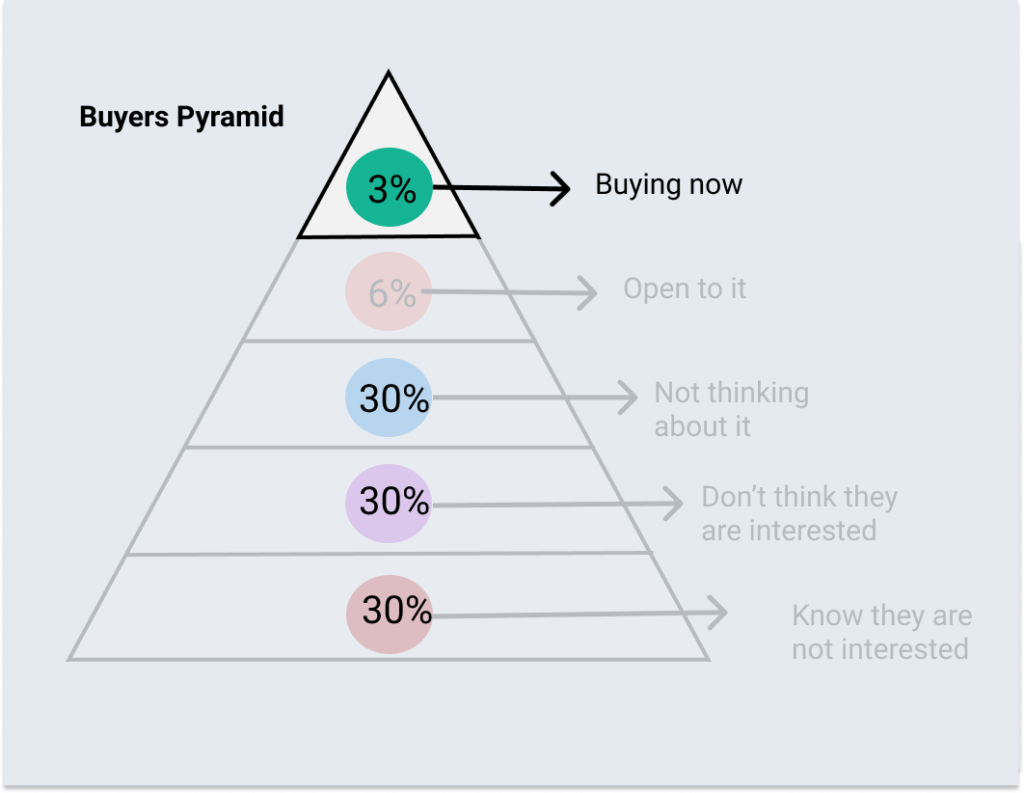
2) Open to Buying (7%)
The next tier down on the buyer’s pyramid is the open-to-buying level. Some SMB owners do target this tier of customers along with the top tier. However, it’s more common to see these customers swept up in marketing meant for the top 3%.
The customers in this tier are open to buying your services, and many are actively interested. However, these potential customers may need more information or guidance to complete the purchase. Items like buy guides and blogs may help your marketing here.
For example, a shop owner wants to prepare for a holiday marketing campaign. She lacks time to do graphic design but doesn’t feel comfortable hiring someone else to do it either. She comes across your blog while she is researching her options. Then she finds she loves your approach and hires your company.
You already produce exceptional materials as part of your digital presence, and you already have the processes in place. With a few tweaks, you can speak to this audience and attract more customers than ever before.
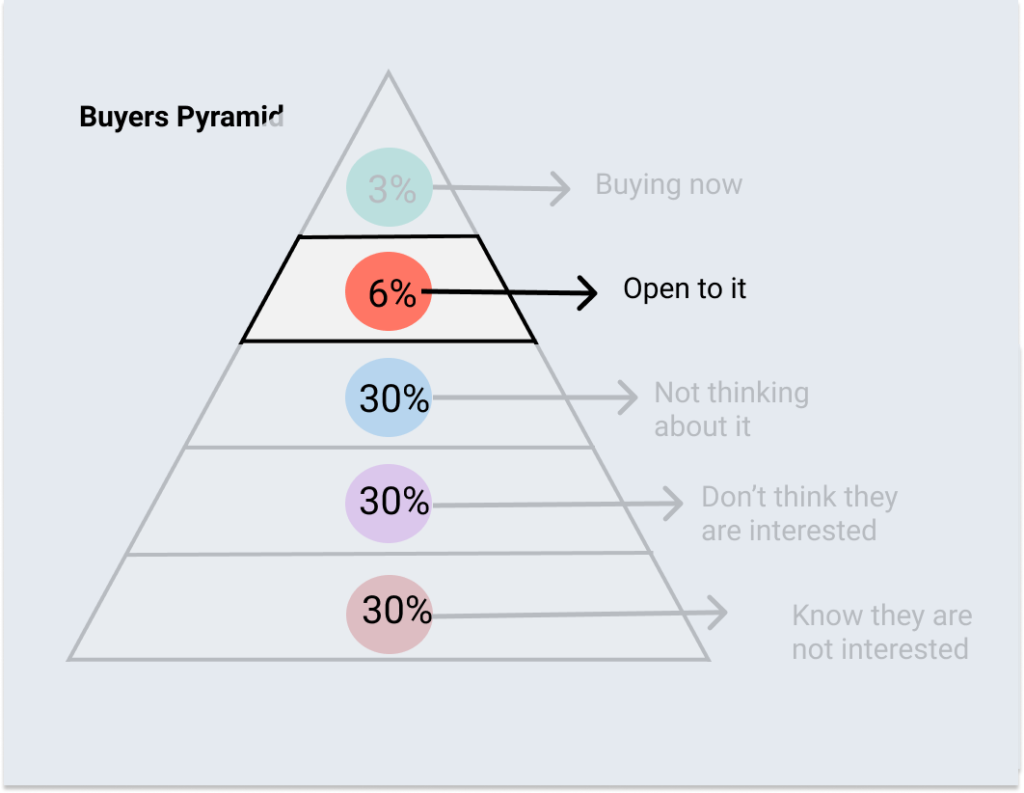
3) Not Thinking About Your Services (30%)
This tier is the first large consumer block on the buyer’s pyramid. Unfortunately, it’s also one many SMB owners ignore. This is also the first tier of customers many people do not understand how to approach for their business.
Customers in this tier can be persuaded to buy, especially over time. Generally, these customers know what they want, but they do not need it right now. However, other varieties like waiting for the finances to line up also fall in this group.
The bottom line is that this group may buy your services in the future. By marketing to them now, you can achieve a positive and lasting first impression. In turn, you will find many people return to your company when they are ready to buy.
For example, a graphic designer develops a business strategy to grow their business. The plan calls for a more active social media presence after they create a camera course. Right now, they do not need a social media specialist, but they still see the ads you put out. In a few months, they buy from you because they are familiar with your work.
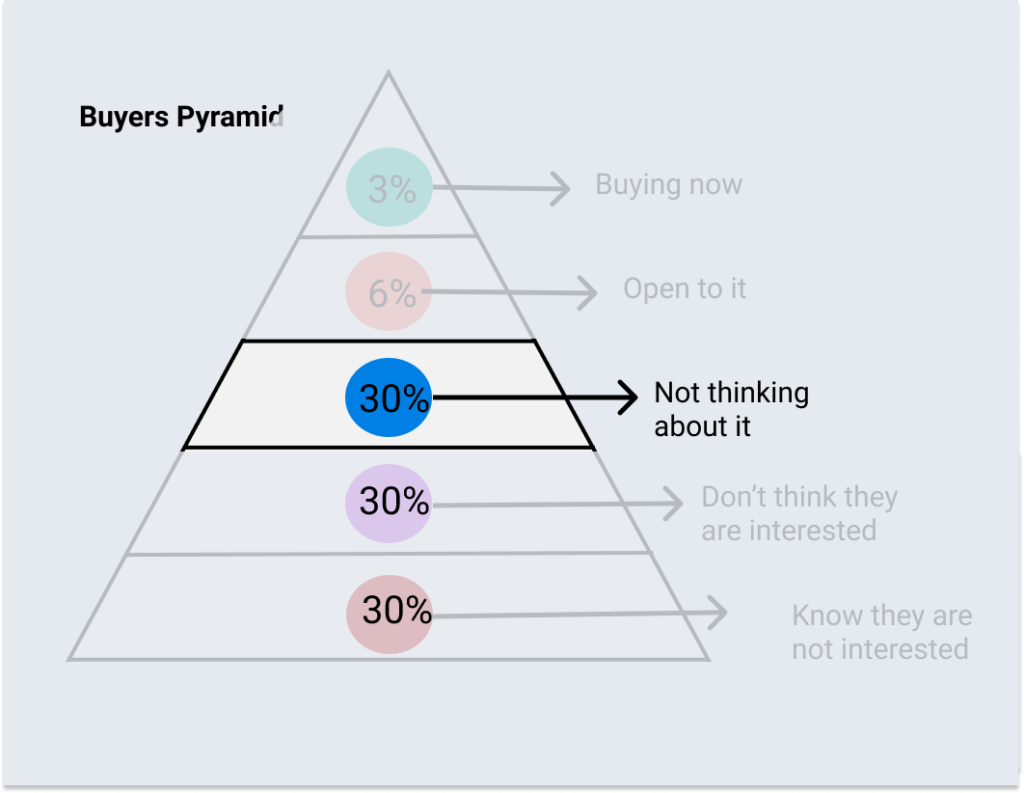
With this buyer’s pyramid tier, the key to gathering more customers is exposure. By engineering multiple casual touches, you are building up the trust and relationship with these customers to do business without coming across as pushy.
4) Think They Don’t Need Your Services (30%)
The next 30% are people who do not know about your services and the massive benefits of hiring your company can bring. Generally, these customers have seen services like yours before but do not see how it could fit into their lives.
In these cases, the customer may also be unclear on what and how you’re offering. These misunderstandings are easy to resolve with further information. Another option is presenting towards this need they did not know hiring you will fix.
For example, someone is bootstrapping a flower shop. You sell website services, but they already do a brisk business from the foot traffic alone. In this case, introducing the flower shop owner to the marvels of website ordering is worth the investment. It’s not something they were thinking about, but it will benefit them.

With this buyer’s pyramid tier, the idea is that you are creating a need where there was not one before. Whether that is breaking down your services so more customers understand or pointing out how your services can help, you point out how your services can benefit the customers.
5) Know They Don’t Want Your Services (30%)
Not every service is perfect for every customer. That’s okay, and it’s a fact of life. However, that does not mean holding it against business owners. Instead, recognize that this tier is part of the market.
For example, an SEO consultant is running a special. A company without a web presence happens to see the ad. Since they are not interested and nothing can be done for the clients, you let them go about their day.
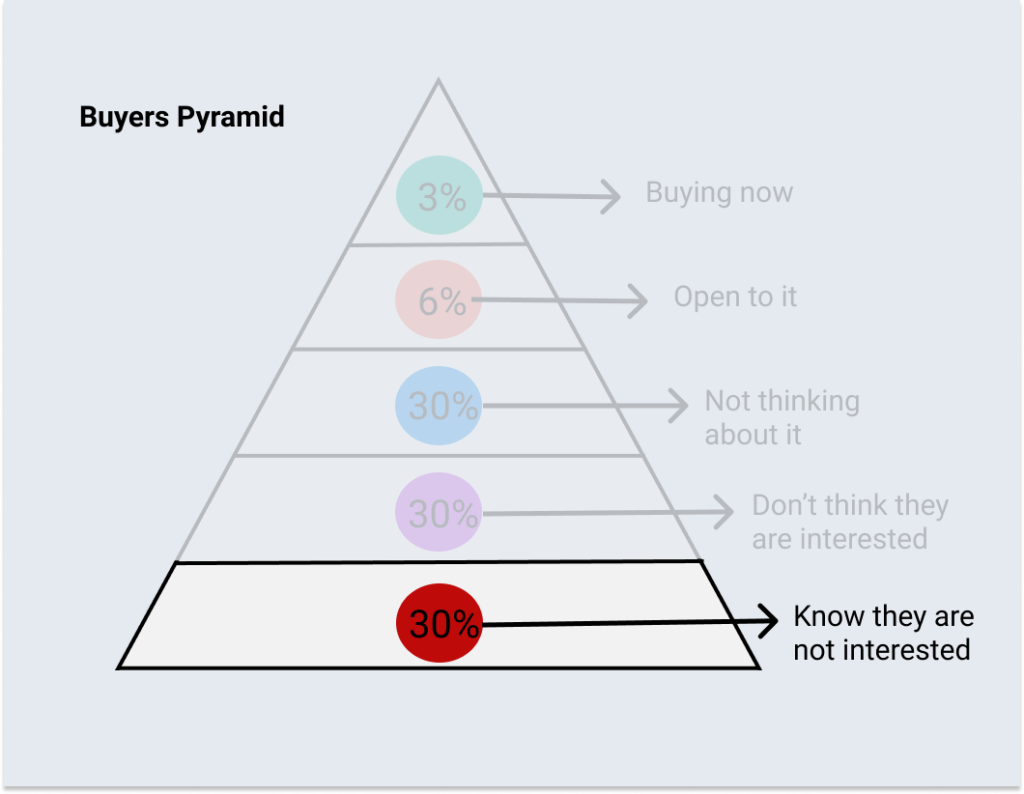
A Business Example
Knowing how each tier will react to your business helps you persuade more customers. A complete example is also helpful for your understanding. For this, the company consults on human resources tasks that can be outsourced.
The top 3% are ecstatic that you have HR services and can consult on their company. They hire you immediately.
The next 7% are interested in hiring an HR consultant. Unfortunately, they haven’t had time to investigate it, but they jump on your offer.
The next 30% can be persuaded that their company would benefit from hiring your HR consulting company. The contracts may take some time, however.
Below that 30% are another 30% who do not realize that their company could use HR consultants to straighten out benefits and work with their employees. They do not know you can save their company a lot of grief until you explain.
The bottom 30% are not interested in HR consultants as they have their own HR departments already to handle the same things your company would.
How to Reach Out to the Top 70% of the Buyer’s Pyramid
Creating a comprehensive marketing plan based on the buyer’s pyramid will require some reexamination on your part. You should address more marketing energy towards persuading people that your company is the best and can provide services they did not know they needed.
1. Offer Samples
Most often, actions speak louder than words. That means that a few steps can persuade people where words fail. With good samples, your company’s methods will spread. If you do it right, you may not even need to repeat the work for each client.
One example of this is the webinar. You can create one high-quality video about one tip that can help people dramatically change their business. This video can be delivered automatically to potential customers who sign up, therefore offering the sample without creating more work.
Another option is a trial period, which works well for software. Again, this does not require repeated extra effort from your company. However, it offers them a taste of what your product or service can do. You may even find some stay because they do not want the hassle of finding another company.

2. Create Added Value
Potential customers are seeking value when they make their decision. By offering that value before a client even signs up, you’re proving that they are on the right path for their company. This value should be meaningful without giving away all your secrets.
For example, if you work with a proven five-step process for an amazing blog, creating value by letting companies have the first step or two is a great option. That’s enough for most to understand how you can positively impact their company if they hire you. With that understanding, they will keep you in mind when they want to move forward.
3. Build Your Web Presence
You never know where more customers will come from. Building a web presence increases your company’s odds of being discovered. Whether that looks like an informative blog, interactive social media, letting people know where to find you with an awesome Wise Stamp signature, or something else, your web presence and branding matter.
The other thing web presences are suitable for is serving as the start of a funnel. Adding value and offering samples are more efficient with the next steps planned out. It’s even better when you do not need to devote time to each potential customer individually.

Final Thoughts
Examining the buyer’s pyramid opens several new audiences that many companies skip over. With a little extra work, you can draw in more customers and convince them that your company will work for them. Tapping into these markets is easier when you can give them a taste of how you can positively impact the company. Then people will remember you when they want to spend money.

